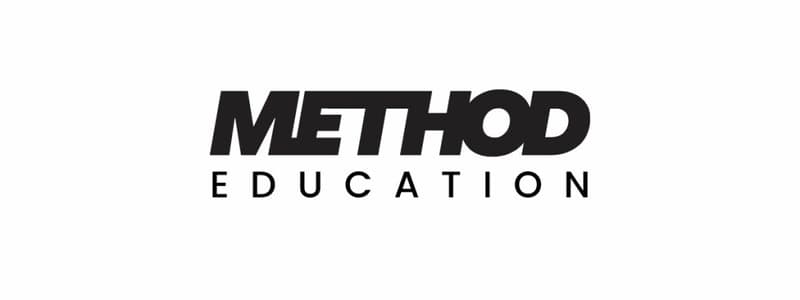Podcast
Questions and Answers
What is a recommended way to achieve variation in training once you are beyond the beginner level?
What is a recommended way to achieve variation in training once you are beyond the beginner level?
- Avoid changing your training at all
- Use the same exercises as everyone else
- Copy your training partner's routine closely
- Focus on your own strengths and limiting factors (correct)
Using similar grip widths in exercises provides sufficient variation.
Using similar grip widths in exercises provides sufficient variation.
False (B)
What should be the basic categories for bar position when squatting?
What should be the basic categories for bar position when squatting?
Front, high bar, and low bar
Match the following functions with their corresponding negative feedback loop applications:
Match the following functions with their corresponding negative feedback loop applications:
A lifter should continuously work on their weak back without considering their strong points.
A lifter should continuously work on their weak back without considering their strong points.
What is the role of strong points in identifying weaknesses?
What is the role of strong points in identifying weaknesses?
Lifters need to deal with their __________ and choose variants to improve them.
Lifters need to deal with their __________ and choose variants to improve them.
Match the following concepts with their descriptions:
Match the following concepts with their descriptions:
Flashcards
Negative Feedback Loop
Negative Feedback Loop
A regulatory process in which increased output of a product suppresses further production to maintain balance.
Positive Feedback Loop (Contrast)
Positive Feedback Loop (Contrast)
Regulatory process where increased product output leads to more production.
Negative Feedback Example (Body)
Negative Feedback Example (Body)
Eating: more food consumed stimulates hunger-suppressing hormones, reducing hunger.
Negative Feedback Example (External)
Negative Feedback Example (External)
Signup and view all the flashcards
Adaptation Regulation
Adaptation Regulation
Signup and view all the flashcards
Identifying Limiting Factors
Identifying Limiting Factors
Signup and view all the flashcards
Prioritizing Weaknesses
Prioritizing Weaknesses
Signup and view all the flashcards
Focusing on Strengths
Focusing on Strengths
Signup and view all the flashcards
Developing Distinct Strengths
Developing Distinct Strengths
Signup and view all the flashcards
Alternating Training Phases
Alternating Training Phases
Signup and view all the flashcards
Exercise Variation for Advanced Training
Exercise Variation for Advanced Training
Signup and view all the flashcards
Minimal Exercise Variation
Minimal Exercise Variation
Signup and view all the flashcards
Squat Bar Position Variation
Squat Bar Position Variation
Signup and view all the flashcards
Foot/Grip Width Variation
Foot/Grip Width Variation
Signup and view all the flashcards
Substantial Exercise Variation
Substantial Exercise Variation
Signup and view all the flashcards
Study Notes
Variation
- Variation is not shocking the muscle, but adjusting training variables to prevent staleness and injury, and maximize the training response.
- Variation is the manipulation of training variables.
- Variables to change are:
- Volume ranges (low, moderate, high)
- Intensity ranges (low, moderate, high)
- Repetition ranges and metabolite loads (low, moderate, high)
- Exercise selection (e.g., leg press vs. front squat)
- Frequency (low, moderate, high)
- Velocity (moderate, fast, maximal)
Negative Feedback Loops
- Biological systems use positive and negative feedback loops.
- Positive feedback loops increase the rate of a product. Example: blood clotting.
- Negative feedback loops decrease the amount of a product. Example: controlling hunger.
- These types of loops are critical for homeostasis in the body.
- Negative feedback loops control and regulate muscle growth.
Adaptive Resistance
- Negative feedback loops are critical for maintaining proper biological functions (hydration, feeding, etc.).
- Negative feedback also governs adaptations in the body.
- The more a system adapts, the more resistant it becomes to further adaptation.
Technique
- Learning a new technique goes through three stages:
- Initially slow progress with many errors.
- Once the early phase is complete, progress becomes faster.
- To prevent adaptive resistance, vary the technique.
- Removing a technique for a while can boost the effectiveness when it is brought back.
Hypertrophy
- Not all muscle fibers are equally stressed in every workout.
- Some muscle fibers are overloaded, while others only maintain their adaptations.
- Constant overload leads to local overreaching past the maximal recovery value (MRV)
- Changing exercises helps combat both problems.
Neural-Mediated Strength Production
- Training any type of neural output for too long leads to adaptive resistance.
- By varying training, the nervous system adapts and gains improve.
General Pattern of Variation
- Varying the exercise selection, volume, and intensity improves adaptation.
- Specificity of training is critical (e.g., appropriate variants when training for hypertrophy).
Proper Timing of Variation
- When varying, use non-competitive exercises for a mesocycle to lower adaptive resistance and ensure continued improvement.
- A time to do competition exercises is needed.
Studying That Suits You
Use AI to generate personalized quizzes and flashcards to suit your learning preferences.




